
Determining which of your eyes is dominant will improve your accuracy. (Photo: Jacki Billings/Guns.com)
If you’ve stuck around the gun world long enough, you’ve no doubt heard the term “eye dominance” but what exactly is eye dominance and why does it matter to shooters?
What is eye dominance?
To put it simply, eye dominance references the eye that does the heavy lifting when it comes to human optics. It’s the eye that is preferred and has greater input when relaying information to the brain — specifically in regards to the location of objects.
“To state it differently, the two eyes do not affect the visual consciousness with equal force. One eye leads the other, and this leading eye is called the dominant eye,” Dr. Walter Fink said in a 1938 study on the dominant eye. “Just as the two hands are unequal in response, both from a motor and from a sensory standpoint, so are the eyes. Just as a person may be right-handed or left-handed, so he may be right-eyed or left-eyed.”
Humans can be either right-eye dominant, left-eye dominant, or cross-eye dominant. Most commonly, right-eye dominant individuals are right-handed while most left-eye dominant individuals are left-handed. For some, their dominant eye is not “in-line” with their dominant side which is known as cross-eye dominance. A cross-eye dominant shooter might be right-handed but favor their left eye when it comes to vision or vice versa.
Eye dominance plays a major role in aiming and knowing which eye is dominant can help you troubleshoot aiming issues.
How do I find my dominant eye?
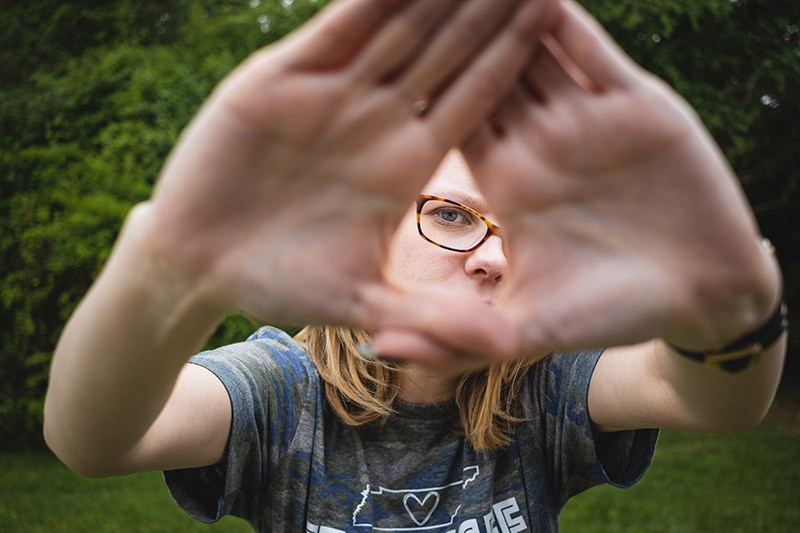
The triangle test is one way to determine eye dominance. (Photo: Jacki Billings/Guns.com)
There are two ways to go about discovering which of your eyes is dominant. The first is the triangle method. To begin:
- 1. Extend your arms out and place your hands together so they form a triangle in front of you.
- 2. Place an object within the triangle and focus on that.
- 3. Slowly bring your hands, still in the triangle, towards your face — always keeping the object in focus in the triangle.
- 4. Your hands will naturally move towards your dominant eye.
Another easy way is to simply point at an object and see which eye your finger falls inline with — we tend to align our pointing finger to our dominant eye.
If you are right-handed and right-eye dominant or left-handed and left-eye dominant, congratulations. The hard part is over. If, however, you find you are a cross-eye dominant read on to get some tips on improving your aim.

Pointing at an object in the distance is another means to determine which eye is dominant. (Photo: Jacki Billings/Guns.com)
Tips for shooting if you’re cross-eye dominant
So you’re cross-eye dominant. You might have already noticed that it can make shooting a tad more difficult as your dominant side and dominant eye duke it out on opposite sides. Often those who are cross-eye dominant experience blurry sights or difficulty in focusing on the sights when aiming. That’s normal as your eyes are duking it out for dominance. There are some ways to overcome this, clear up the blurriness and get back out to a successful range session. Different shooters prefer different methods.
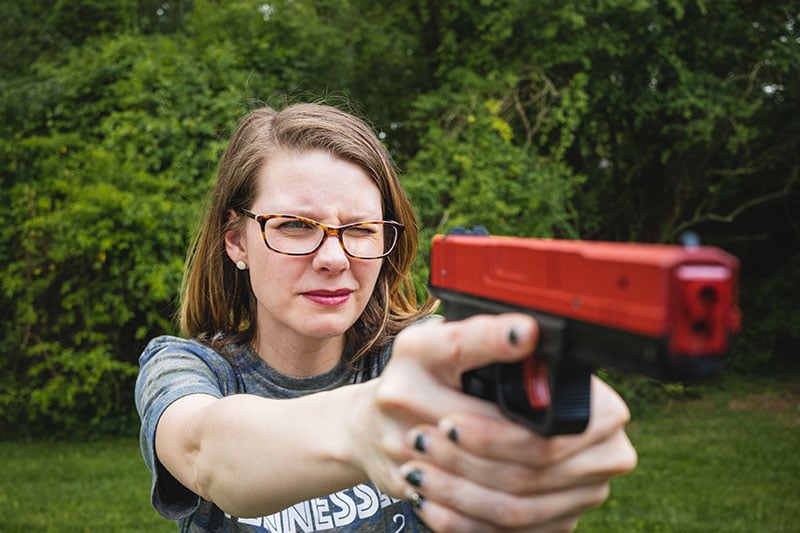
Closing the weak eye is an option when shooting, though it eliminates your peripheral vision. (Photo: Jacki Billings/Guns.com)
- 1. Close the weak eye — In a plinking session or competition, closing the weak eye might be the easiest means to get the job done as it eliminates input from the non-dominant side; however, it does limit your peripheral vision. In the context of simply plinking, this might be a non-issue but, if you train like you fight, closing one eye will prevent you from seeing oncoming threats from the side.
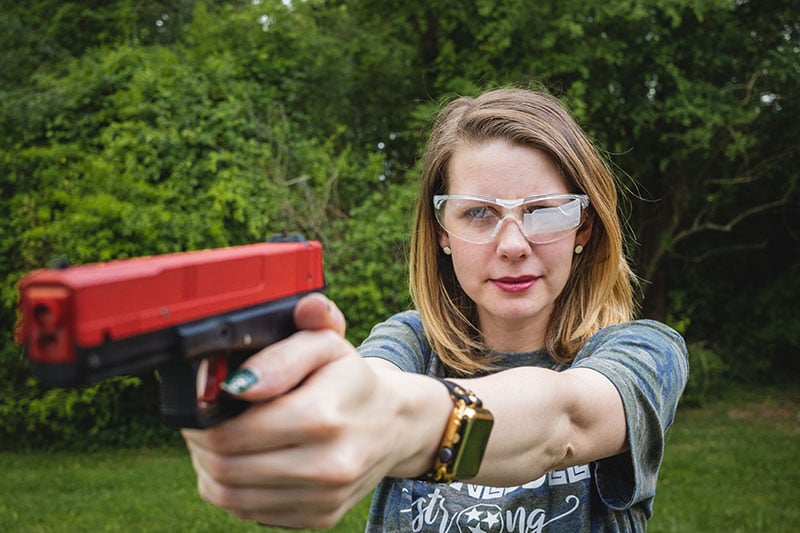
A little tape on shooting glasses over the weak eye keeps both eyes open but eliminates the distraction of the weak eye. (Photo: Jacki Billings/Guns.com)
- 2. Place masking tape over your shooting glasses on the weak eye — Again, this tip is best used for competition shooters or plinkers. If you prefer to train with both eyes open a simple square of masking tape over the weak eye will do the trick. It allows you to maintain peripheral vision while also preventing the weak eye from interfering with sight acquisition.
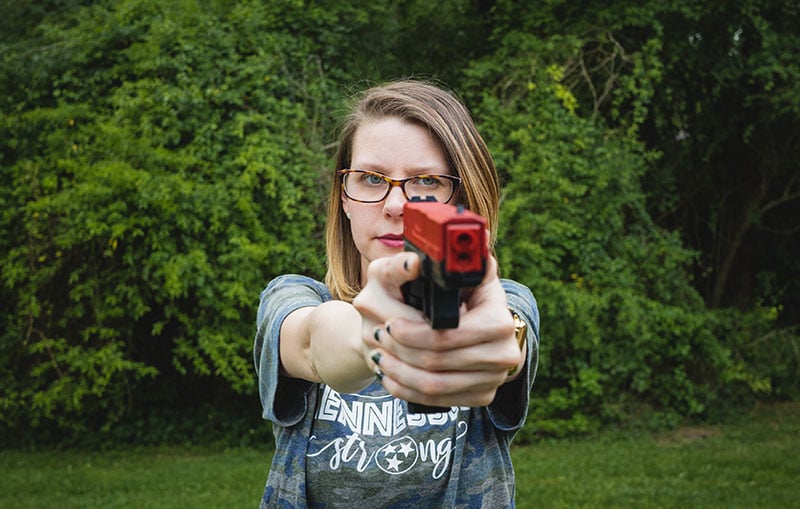
Moving the gun so it aligns under the dominant eye keeps both eyes open. (Photo: Jacki Billings/Guns.com)
- 3. Move gun so it aligns under dominant eye — Keeping both eyes open, simply move the gun ever-so-slightly so the gun aligns with the dominant eye. It seems simple enough but it does take some practice — especially on the draw — to ensure you are getting a good alignment.
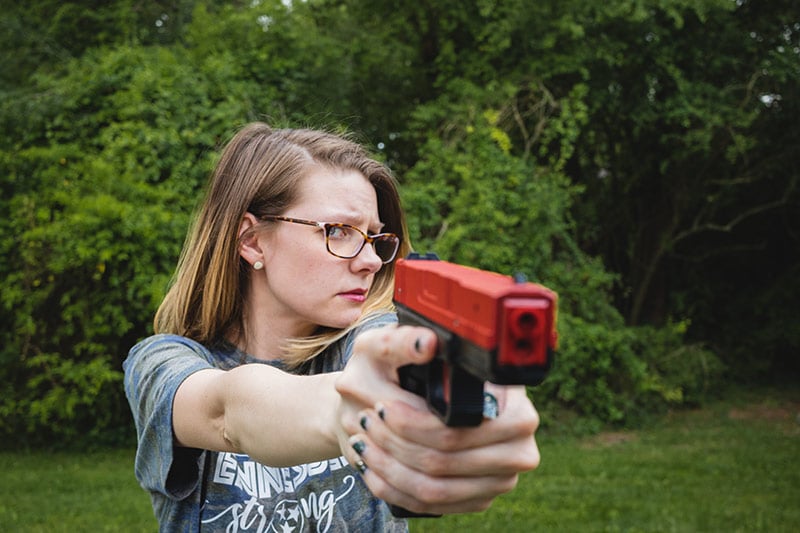
While slightly exaggerated for demonstration, a slight turn of the head allows both eyes to remain open. (Photo: Jacki Billings/Guns.com)
- 4. Turn your head to align dominant eye to the gun — For this method, the gun remains centered where you naturally draw but requires you to turn your head to align the dominant eye to the sights. Again, this allows you to shoot with both eyes open but negates the influence of the weak eye on the sights.
Regardless of the method, make sure you put in the time to practice both on the range and at home during dryfire. While you’re at it, check out some tips from the pros below:
The post What is Eye Dominance? appeared first on Guns.com.
